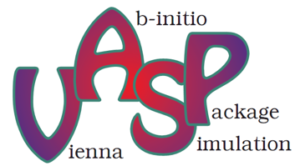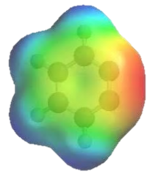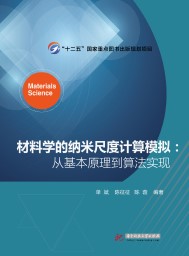Electronic properties of crystal structureMaterials Simulation on the Nanoscale
Course Description
Density functional theory (DFT) is a computational quantum mechanical modellingmethod used in physics, chemistry and materials science to investigate the electronicstructure of many-body systems, inparticular atoms, molecules, and the condensed phases. DFT is among the most popular and versatile methods available in condensed-matter physics, computational physics, and computational chemistry. The Nobel Prize in Chemistry 1998 was divided equally between Walter Kohn "for his development of the density-functional theory" and John A. Pople "for his development of computational methods in quantum chemistry."


In this course, we will introduce the basic theory of DFT and how to use DFT software VASP to investigate the mechanical, electronic, vibriational perperties of materials as well as the transition state of a chemical reaction. Based on this course, graduated students can understand the basic theory of DFT and apply this method to their research topics.
Instructor(s)Prof. Bin ShanLect. Yanwei Wen |
HUST Course NumberAs Taught inFall 2020 |
Levelgraduate and Ph.D |
Text Book
|
|
The reference text book is 《材料学的纳米尺度计算模拟:从基本原理到算法实现》. The book and the course lectures are complementary to each other, though there is more detail and comprehensive description in the book about some topics. It is available from jd.com |
Course calendar and lecture notes
| Lecture | Main Content | Resource | Homework |
|---|---|---|---|
| 1 | Introduction of computational methods | Lecture01.pdf | |
| 2 | Linux Introduction: installation, common linux commands
ssh client download: Putty |
Lecture02.pdf | |
| 3 | Linux continued: File permissions; shells; Introduction of VASP and running your first VASP job! | Lecture03.pdf | |
| 4 | Calculating molecular structures, binding energies, orbitals, and charge densities | Lecture04.pdf | Q |
| 5 | Moluculer orbitals, charge densities, bader change, and building molecules from online databases | Lecture05.pdf | |
| 6 | Modelling of materials structures | Lecture06.pdf | Q |
| 7 | Lattice constant of crystal | Lecture07.pdf | |
| 8 | Elastic constant of bulk materials | Lecture08.pdf | Q |
| 9 | Point defects: vacancies and interstitials | Lecture09.pdf | |
| 10 |
Electronic properties of crystal structure |
Lecture10.pdf | Q |
| 11 |
DOS calculation |
Lecture11.pdf | |
| 12 | Surface: Surface models; Surface energies, Nanocrystal shapes | Lecture12.pdf | Q |
| 13 | Bond analysis | Lecture13.pdf | |
| 14 | Adsorption | Lecture14.pdf | |
| 15 | Lectures on machine learning | Lecture15.pdf | |
| 16 | STM simulation | Lecture16.pdf |
